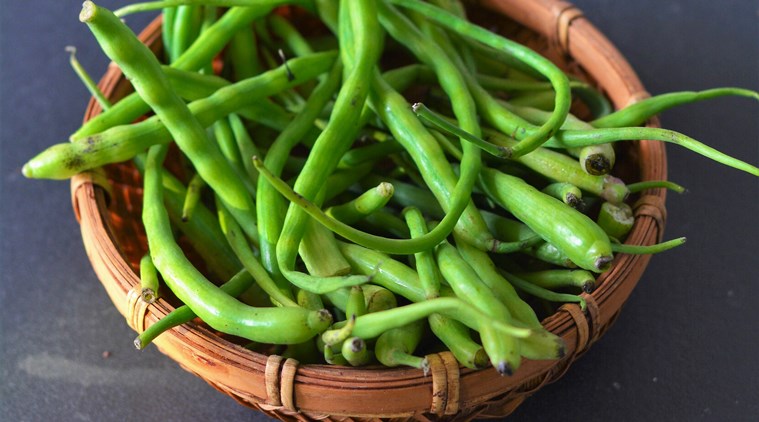📣 For more lifestyle news, click here to join our WhatsApp Channel and also follow us on Instagram
Why you shouldn’t avoid mogri or radish pods this winter
The sharp flavours make for a popular ingredient in various preparations, like chutneys.
 Don’t forget to include radish pods or mogri in your diet. (Photo: Getty Images/Thinkstock)
Don’t forget to include radish pods or mogri in your diet. (Photo: Getty Images/Thinkstock)
Have you heard of mogri? The green and purple radish pods that resemble beans are among the most undervalued vegetables. One of the main ingredients in salads and even pickles, they make for a nutritious and healthy treat. Yet, not much is known about this winter must-have. They are mostly available in winter, which is why you should check them out.
Known by different names in different regions of India, radish pods are scientifically classified as Raphanus sativus and are members of the Brassica (mustard) family along with arugula, broccoli and kale. They are also called singla and moongra. The pods carry one or two seeds, with a peppery flavour.
Since they balance out flavours, they are known to be ideal for pairings with bacon, cheese, salmon and wasabi. They are also used in stir fries, salads, and even cooked with jeera, hing, turmeric and potatoes to make for a healthy sabzi. They are also mixed in kadhi or any vegetable preparation.
Here are benefits of the pods
Radish pods are known to be rich in ascorbic acid, folic acid and potassium.
They are a good source of vitamin B6, riboflavin, copper, magnesium, and calcium.
One cup of sliced red radish bulbs are said to be beneficial for health issues including cough, gastric discomfort and intestinal disorders.
So, does your winter thali have these?
📣 For more lifestyle news, click here to join our WhatsApp Channel and also follow us on Instagram
Photos


- 01
- 02
- 03
- 04
- 05

























